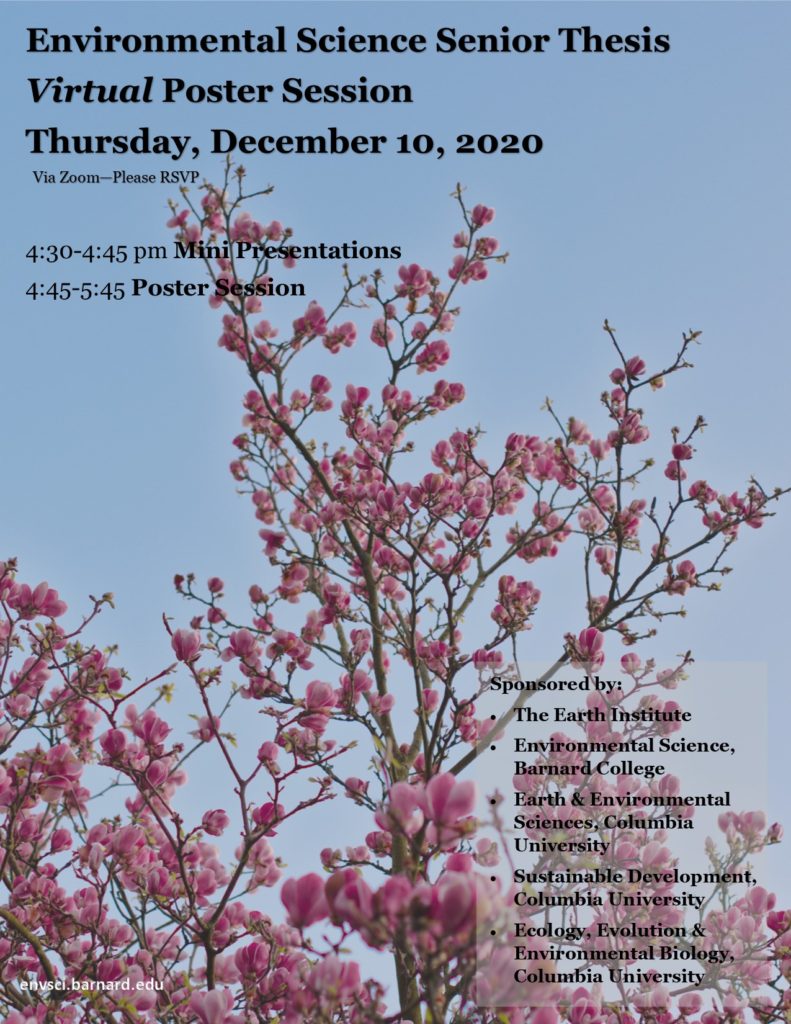
For participation in this poster session, please RSVP!
You will receive an email with instructions shortly before the poster session with a more detailed schedule and appropriate Zoom links (if you have RSVP’d!).
Poster authors and titles (in alphabetical order):
Ajayi, Faith: Analysis of invasive earthworm impact in a Vermont rich northern hardwood forest
Carrero Mustelier, Emily: Imaging Seismic Anomalies in the Southeastern United States
Jean-François, Léa: Wheat Breeding to Discover Genes on Chromosome 6A to Improve Grain Wehat Yield
Ledeczi, Anna: Earthquake Relocation along the Bismarck Sea Seismic Lineation, Papua New Guinea hints at New Tectonic Interpretation
Nwoke, Ifeoma: An analysis of New York City community gardens as a measure cultural exchange and ethnic identity
Visnic, Olivia: Connection with More-Than-Human: Green Spaces During COVID-19
